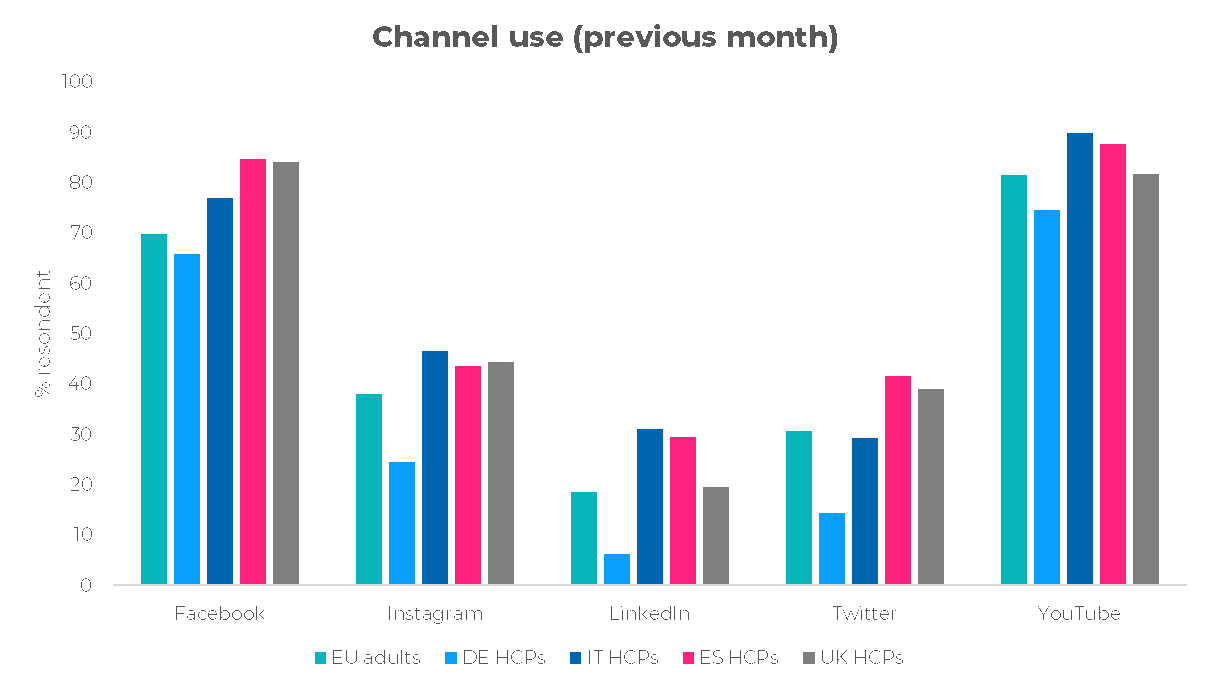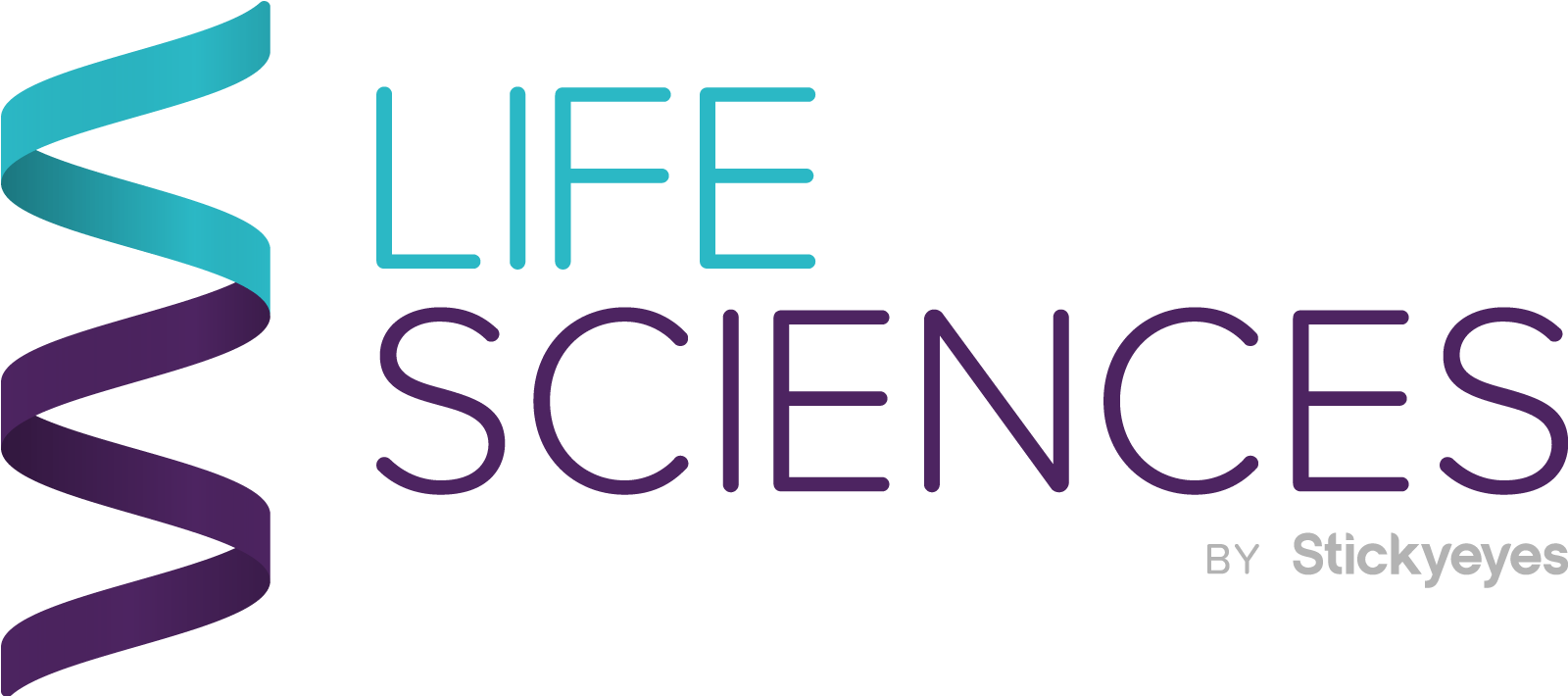
How to reach HCPs on social media: are you missing out?
In this article you’ll learn:
- Why social media is a ripe environment for reaching HCPs
- How to find which channels your HCPs or specialists are inhabiting
- The steps to take to reach HCPs through paid social media
One of the common misconceptions with pharmaceutical brands is that health care professionals (HCPs) do not use social media, or if they do, they do not use it in a ‘professional’ mindset. In fact, we have found the opposite – there is high penetration of HCPs using social media, and when they do, they have more time to consume content. We've found that after high intent channels such as paid search, social media delivers the strongest time on site and good user engagement.
The performance we often see from social media channels when used as part of the paid media mix shows that HCPs have more time available to consume content. This then acts to deliver a higher quality of interaction incrementality to the overarching campaign. Majority of media plans across we see across EMEA often do not include a breadth of paid social channels for reaching HCPs, which for many campaigns is a missed opportunity.
Finding the right moment when a HCP has the time to digest your content is a common challenge for pharma brands, and social media could provide one route to overcoming this.
Types of social channels
Social media for pharmaceutical brands can be split into three different types of platforms:
| Type | Description | Examples |
| Professional | Social channels used for a specific professional purpose | LinkedIn, Xing, Sermo, M3 |
| Personal | Social channels used for personal reasons | Facebook, Instagram, Twitter |
| Video | Where video content consumption forms the core part of the social channel | YouTube dominates, but video distribution can be broadened through programmatic campaigns |
Here are the steps we take to reach HCPs on social media:
1. Discover where your audience is
To develop an effective campaign, audiences need to be at the core of the strategic planning process. This involves discovering and understanding the social media outlets your audience is active on and the reasons they use social media. Our proprietary tool PinPoint can uncover the channels where your audience resides. This can be done broadly across a territory, or at a deeper level, for example, by specialist therapy area.

Global Web Index 2019
As you might expect, Facebook typically indexes highly for HCPs across most markets. However, you’ll also need to determine whether there’s a big enough audience on these platforms to allow for cost effective targeting.
For example, it can become challenging if you wish to reach specialists within a single country, where the volume of those individuals is too low to make using social media a viable or cost-effective route. The strategies we develop for clients will factor this audience scoping into the planning phase, ensuring the relevant and proportionate amount of media spend it placed in this space.
There are several targeting techniques we use to ensure we are reaching the right audiences on each channel. Each social platform’s targeting varies, but can include:
- Interest based targeting, such as being a member of a professional society
- Job title targeting based on the HCP’s job role
- Keyword or hashtag targeting based on topics they are talking about – this is especially useful if paid channels are being used to maximise events
- Custom intent targeting, reaching users across YouTube based on their Google search behaviour
It is also possible to layer secondary targeting with this. For example, a physician will not be between 18-24 so excluding this demographic can generate greater efficiencies.
2. Matching social channels to your objectives
Once you have identified who your audience is and what social media platforms they use, you can then align this to your objectives. Each platform has different strengths and offers different ad formats in order to reach your goals.
Below is an example of some of the formats you can use across social media:
| Channel | Ad Format | Awareness | Engage | Conversion |
| Static/Video | Y | Y | ||
| Lead Gen | Y | |||
| Instant Experience | Y | |||
| Static/Video | Y | Y | ||
| InMail | Y | Y | ||
| YouTube | PreRoll | Y | Y | |
| YouTube | Bumper | Y |
3. The right ads at the right time
Deploying effective messaging is often a core challenge for pharmaceutical brands. There is a hard balance to be struck between compliance considerations, tailored messaging and asset development. Ahead of implementing any campaign, careful planning to be undertaken.
As audience sizes can be relatively small, there is high risk of ‘ad fatigue’, which happens when the HCPs have seen an advertisement too frequently. This can result in a HCP becoming less likely to take the desired action, or worse, hiding the advertisement from their feed. Having a content calendar in place and regular, diverse asset and messaging sets will combat this.
The relevance of the messaging is also important. In order to be most successful with your campaigns you need to understand what your audience is interested in. Using social listening tools, we’re able to understand what your audience consuming and sharing. Tailoring your messages to the types of content HCPs are already engaging with will resonate significantly more.
4. Get compliance on board
Compliance is often a barrier to pharmaceutical marketing and communications teams considering paid social media.
Getting compliance teams on-side is crucial to using social media to reach HCPs. We have experience in launching medical brands on social media, and we have found that running workshops with compliance teams is an effective way to get stakeholders on board. A workshop may cover how paid social channels work, the social campaign and assets you are planning, and your approach to community management. Training compliance teams who don’t typically deal with paid social assets can often make the review processes much smoother.
It’s also important to ensure you have processes in place to safeguard for adverse events – this is key for markets whose codes require this, such as in the UK. Developing a social media monitoring and moderation process will ensure you not only adhere to the ABPI code but also build a strong community of HCPs. Having the correct processes in place provides a strong argument to approve the use of social media.
Conclusion
There is a strong and compelling case for pharmaceutical brands to develop paid social strategies when looking at content distribution to HCPs. Paid social is a complex distribution channel with many vendors in this space offering multiple ad formats to suit your objectives.
It is this complexity that makes it attractive: social channels offer the ability to reach and engage audiences through a variety of different targeting methods and ad formats. It is because of this it is common for our clients to find social media to be one of the strongest performing channels for engaging HCPs.
- To find out more about our approach to using paid social media for your marketing or communications objectives, or if you’d like to get in touch – drop as a line at lifesciences@stickyeyes.com. We’d love to hear from you.









